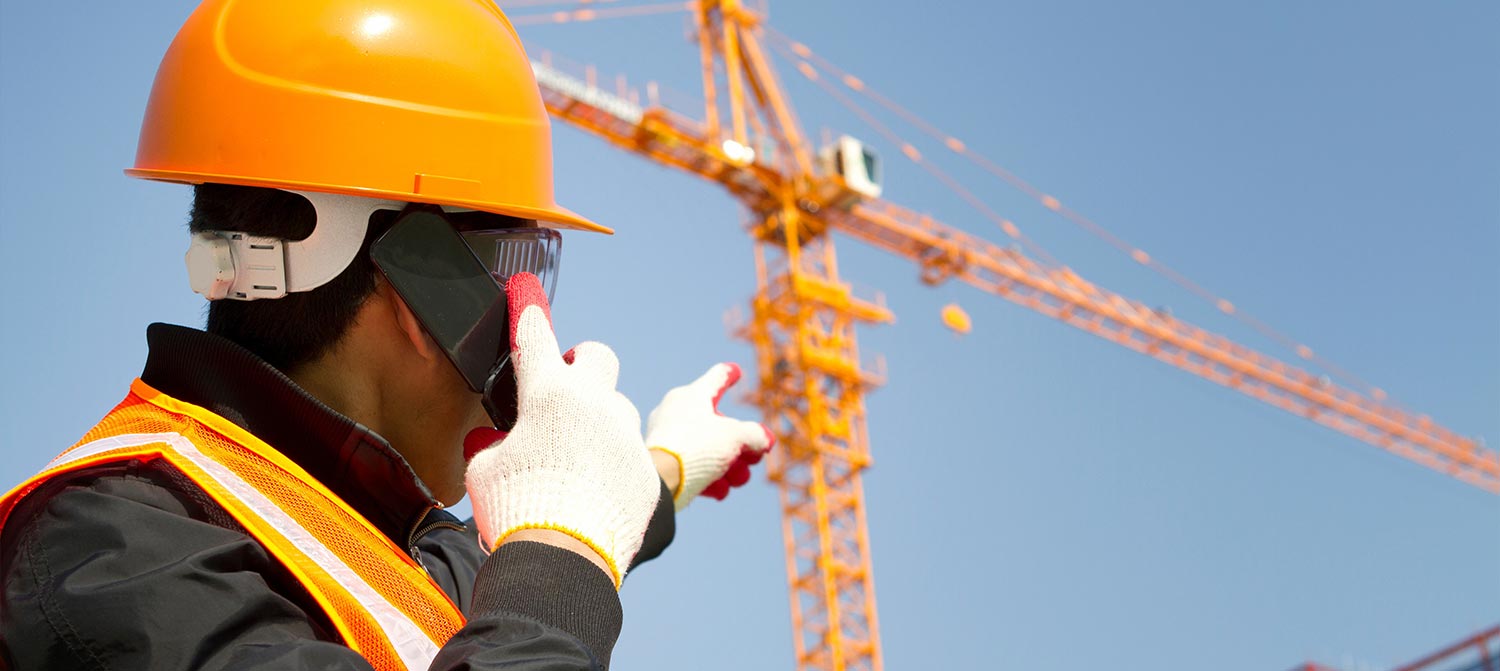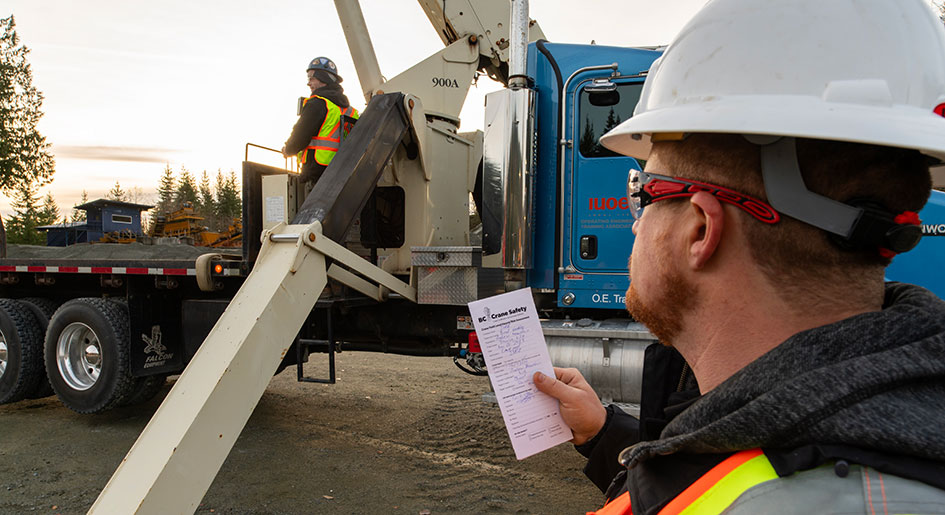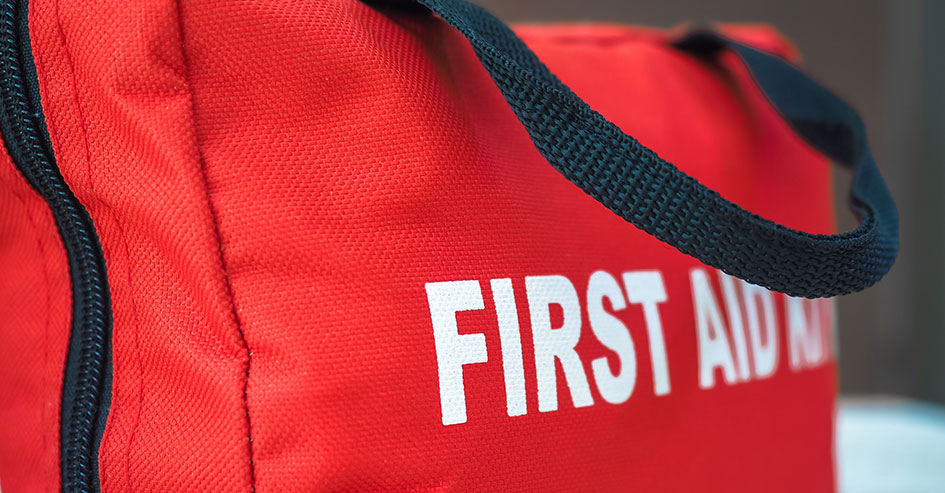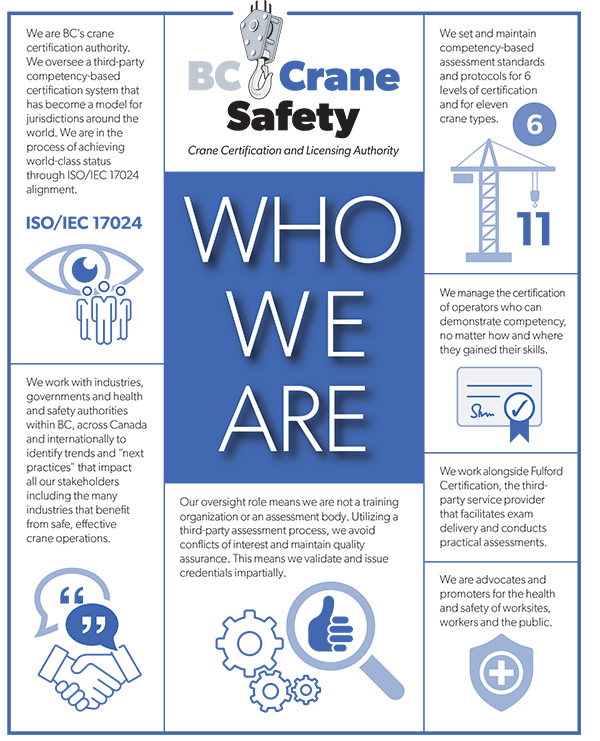September 24, 2024
BC Crane Safety Newsletter
FALL 2024
Crane Binder: Documents for Tower Crane Operations
Have you ever wondered if you have all the appropriate documentation for your on-site crane binder?
BC Crane Safety worked closely with WorkSafeBC and key stakeholders in the industry to produce Tower Crane and Self-Erecting Tower Crane binder templates for owners, employers and prime contractors to fully adopt and use to support their current programs.
The crane binders include a table of contents and numbered section topics for easy tabbing when printing and binding.
The binder templates are available for download from the Tower Crane Site Binder page. The digital copies include hyperlinks that allow you to directly view the associated WorkSafeBC regulations.
The binders will be useful for crane owners and general/prime contractors to ensure appropriate diligence is met.
Visit our Tower Crane Site Binder page to download the Tower Crane and Self-Erecting Tower Crane Site Binder templates.
Prepare for the New Regulatory Amendment Related to Notice of Project – Tower Crane (NOP-TC)
The WorkSafeBC Board approved amendments to Part 14, Cranes and Hoists, of the Occupational Health and Safety Regulation (OHSR) related to the Notice of Project for Tower Cranes (NOP-TC) which are set to take effect on October 1, 2024.
To effectively prepare for the new regulatory requirements, the workplace owner or the prime contractor needs to coordinate all parties involved in tower crane activities and submit a formal Notice of Project – Tower Crane (NOP-TC) to WorkSafeBC at least two weeks in advance of beginning tower crane work. This notice documents specific tower crane activities such as erection, climbing, repositioning and dismantling. The new rules require that companies notify WorkSafeBC ahead of time, document the qualifications of the supervisor in charge, post certain information at the worksite and provide contact details for any questions or concerns.
Please ensure that your operational and safety procedures are thoroughly reviewed and aligned with these new requirements well ahead of the implementation date to ensure a seamless transition and continued compliance.
Welcoming New Talent: Provisional Certification and Employer Support in the Crane Industry
When new graduates enter the workforce they bring fresh talent and energy to the crane industry. As these recent graduates transition from school to the job site, they contribute new perspectives and are eager to apply their learned skills. This influx of new blood is vital for the continued growth and innovation within the industry, ensuring that safety practices and operational standards are upheld and enhanced as they begin their careers.
This year, BC Crane Safety has joined in trade shows from organizations such as Skills Canada and IUOE to help the next generation of skilled workers explore the crane operator industry.
How can interested people join the crane industry, and how can employers and supervisors help them succeed in their careers? Click below to learn more.
New Regulatory Amendment Related to OHS First Aid
Is your company prepared for the new Occupational First Aid regulatory changes coming into effect on November 1, 2024? Find out how these changes may impact you by checking out BC Crane Safety’s article, OHS First Aid Regulation Changes November 1, 2024 and reviewing WorkSafeBC’s First Aid Requirements page.
Q&A
Question: Are your Qualified Supervisors registered with BC Crane Safety yet? Do you know how to register?
Answer: Qualified Supervisors: In relation to the erection, climbing, repositioning, or dismantling of a tower crane, means a supervisor who is qualified to erect, climb, reposition or dismantle, as the case may be, that particular tower crane.
By registering as a Qualified Supervisor with BC Crane Safety, employers will avoid having to upload any qualification and competency documents each time they submit a Notice of Project – Tower Crane (NOP-TC) to WorkSafeBC.
If the person wishing to register as a Qualified Supervisor is a certified crane operator, they will already be registered with BC Crane Safety and have a SkillRecord Passport. In this instance the employee or employer would just need to email any appropriate certifications and training records, along with their SkillRecord Passport name and number to info@bccranesafety.ca with “Qualified Supervisor Registry” in the subject line.
If the person wishing to register as a Qualified Supervisor does not have an operators certificate they will need to register with BC Crane Safety to receive a SkillRecord Passport. Once registered they (or their employer) will need to email any appropriate certifications and training records, along with their SkillRecord Passport name and number to info@bccranesafety.ca with “Qualified Supervisor Registry” in the subject line.
If you have any questions on this process you can contact BC Crane Safety through our general email address info@bccranesafety.ca or call 604 336 4699.
Question: A concerned resident from Abbotsford contacted BC Crane Safety to report a tower crane on a neighbouring jobsite had moved in strong winds and the jib was now resting over their residence. They were concerned about resident and pedestrian safety under the crane and were asking about safety measures.
Answer: Members of the public sometimes express concerns about tower cranes being unsafe. The public is not always as informed about how cranes operate safely as operators, owners and general contractors are. It is understandably intimidating to see a tower crane moving in the wind.
BC Crane Safety encourages tower crane owners, in collaboration with property owners and general contractors, to provide some common safety information to jobsite neighbours prior to the crane being mobilized to the site.
The notification of safety measures can include:
Weathervaning: This best practice is crucial to crane safety. When the tower crane is not in use, the crane will be put into “weathervane” mode, which allows the crane to swing freely in whatever direction the wind is blowing. This ensures stability and that the slew/swing brakes do not get excess wear and tear in the wind.
NDT (Non-Destructive Testing) is required on all tower cranes. At minimum, the inspection is completed annually and certified by a professional engineer. This ensures the crane is structurally certified to perform safely.
Daily Testing: Tower crane operators are required to fill out daily “pre-trip” checklists on the cranes they are operating. This includes testing the limits set by technicians when the crane was put up, ensuring all wire rope is properly greased and winding on the drum, operating functions are working as usual, brakes are engaging, etc.
Preventive Maintenance: Each tower crane has a specific preventive maintenance schedule outlined in the manual depending on size, capacity, type, etc. Preventive maintenance looks at things such as the brakes, motors, functions, greasing, electrical panel testing, etc.
Zoning Devices/Anti-Collision System: Tower cranes can be adapted to include a zoning system or anti-collision device. In addition to operator awareness, this device physically stops the crane from flying loads to certain areas, such as within the limits of approach to power lines.
WorkSafeBC Inspections: Tower crane owners and jobsites are required to submit paperwork to WorkSafeBC prior to the crane being installed on site. WorkSafeBC officers will audit the paperwork and safety practices of the crane owner, erector and operator to ensure safety.
30M33: Power utility system owners and contractors/employers must complete Form 30M33 and submit it to WorkSafeBC before any workers work within the “limits of approach” of high-voltage equipment or conductors. It’s a safety assessment of the power lines near the job site where the tower crane will be put up. Some safety measures can include flagging and/or hooding of the lines or transformer, re-routing or burying lines, removing lines, or using a designated hydro-trained safety spotter when operating within the limits of approach.
Anemometers/Wind Meters: WorkSafeBC requires wind meters to be installed on all tower cranes. This ensures the operator knows the wind speed and wind gusts so they can determine if it is safe to operate. WorkSafeBC’s limitation for wind speed is 50 km/hr.
“Live Load” Limitations/Agreement: Depending on the job site, sometimes an agreement is made with the tower crane operator on site that no “live” loads flow over adjacent properties. “Live” load means anything on the hook except rigging chains or slings.
Best Practices/Safe Work Practices or Procedures: Each tower crane company will have practices and procedures for operators to follow, they include tasks such as working near power lines, using taglines to control loads, working in the wind, power lock out/tag out.
Training: All operators for mobile cranes, boom trucks and tower cranes in BC must hold a valid certificate to operate a crane.
If there is still a concern to be addressed, we encourage contacting WorkSafeBC through the report hotline 1-888-621-7233 to report any safety concerns.
Question: What is the regulation for using a manbasket hoisted by a crane with more than a single part of a line? I am originally from Ontario, and the MOL has certain requirements and regulations for hoisting the manbasket. I would like to know what your requirements are for this day-to-day operation.
Answer: The BC regulations for the crane lifting a manbasket are:
(1) The employer must conduct a risk assessment in any workplace in which a need to rescue or evacuate workers may arise.
(2) If the risk assessment required by subsection (1) shows a need for evacuation or rescue, appropriate written procedures must be developed and implemented, and a worker assigned to coordinate their implementation.
(3) Written rescue and evacuation procedures are required for but not limited to
-
- work at high angles,
DIVISION 5 – MOVABLE WORK PLATFORMS
13.27 Cranes and hoists used to suspend work platforms
It’s very important to remind the operator that lifting personnel is considered a critical lift. There must be accompanying paperwork for a critical lift, and the operator must have their full scope certificate.
Rigging must also be a 10:1 safety factor
See WorksafeBC’s WCB Standard, WPL 2-2004 Design, Construction and Use of Crane Supported Work Platforms for more details on personnel/secondary anchorage points.











